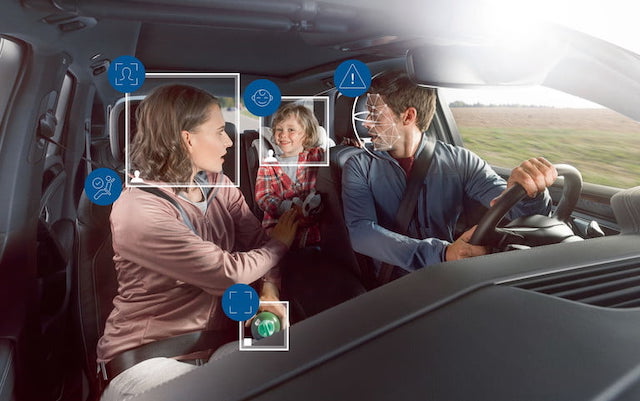Bosch’s AI-powered tech could prevent accidents

by Ronan Glon, Digital Trends
Most cars sold new in 2019 are equipped with technology that lets them scope out the road ahead. They can brake when a pedestrian crosses the road in front of them, for example, or accelerate on their own when a semi passing a slower vehicle moves back into the right lane. Now, Bosch is developing artificial intelligence-powered technology that opens new horizons by teaching cars how to see what — and who — is riding in them. It sounds creepy, but it could save your life.

Bosch’s system primarily relies on a small camera integrated into the steering wheel. Facial-recognition technology tells it whether the driver is falling asleep, looking down at a funny video on a phone, yelling at the rear passengers, or otherwise distracted. Artificial intelligence teaches it how to recognize many different situations. The system then takes the most appropriate action. It tries to wake you up if you’re dozing off, and it reminds you to look ahead if your eyes are elsewhere. Alternatively, it can recommend a break from driving and, in extreme cases, slow down the car to prevent a collision.
Driver awareness monitoring systems are already on the market in 2019. Cadillac’s Super Cruise technology notably relies on one to tell whether the driver is paying attention, but Bosch’s solution is different because it’s being trained to recognize a wide variety of scenarios via image-processing algorithms. This approach is similar to how the German firm teaches autonomous cars to interpret objects around them. Real-world footage of drivers falling asleep (hopefully on test tracks, and not on I-80) shows the software precisely what happens before the driver calls it a night.
This technology can also keep an eye on your passengers. Thanks to a camera embedded in the rearview mirror, the system can keep an eye on the people riding in the back, and warn the driver if one isn’t wearing a seat belt. It can even detect the position a given passenger is sitting in, and adjust the airbags and seat belt parameters accordingly. Safety systems are designed to work when someone is sitting facing forward and upright, but that’s not always the case. If you’re slouching in the back seat (admit it, it happens), the last thing you want is the side airbag to become a throat airbag.




